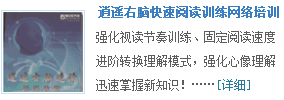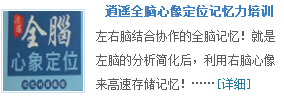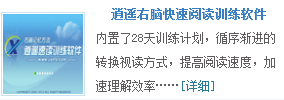名词是表示人、地方、事物或抽象概念名称的词,可以说名词是万物之名称。名词可以是人的名字、地方名称,还可以是职业称呼、物品名称、行为名称、抽象概念。
1名词的分类
1.集体名词
这类名词作主语,强调整体时,谓语动词用单数形式,强调个体及其成员时,谓语动词用复数形式。
例如:class,family,team,group,party,army,enemy,crew,government,company,crowd,committee
2. 不可数名词
2.1 专有名词
单个单词形式的专有名词无复数,不与冠词连用;由普通名词构成的专有名词前用定冠词。
例如: China has a longer history than the United States.
2.2 学科名词和物质名词
学科名词与物质名词表泛指时,不用冠词。
例如: My brother likes physics while I like chemistry.
2.3 抽象名词
表泛指意义的抽象名词或用在介词之后的抽象名词,不可数,不与冠词连用。
抽象名词表具体意义或被某一(些)形容词修饰,与不定冠词连用。
Failure is the mother of success.
Dictionary is a great help to many people.
be of (some/much/little/no/great) + 少数几个抽象名词,如 value,help,use,importance 意同“be + 该抽象名词的形容词形式”。
It is said that tomorrow's meeting is of much importance.
(比较:It is said that tomorrow's meeting is very important.)
掌握某些名词永不用复数形式,永不与不定冠词 a/an 连用。
fun,luck,news,information,progress,equipment,furniture,practice,advice,clothing,homework,housework,medicine,grass,rice,wealth,health,gold,earth(土),ham,luggage,baggage,money
1名词复数的变化
1.名词复数的规则变化
一般情况加 -s,清辅音后读/s/ map-maps,浊辅音和元音后读 /z/ bag-bags /car-cars
以s, sh, ch, x 等结尾加-es 读 /iz/ bus-buses/ watch-watches
以ce, se, ze, 等结尾加-s 读 /iz/ license-licenses
以辅音字母+y结尾变y为i再加es 读 /z/ baby-babies
2.其它名词复数的规则变化
1) 以y结尾的专有名词,或元音字母+y 结尾的名词变复数时,直接加s变复数。例如:
two Marys the Henrys
monkey---monkeys holiday---holidays
2) 以o 结尾的名词,变复数时:
a. 加s,如: photo---photos piano---pianos
radio---radios zoo---zoos;
b. 加es,如:potato--potatoes tomato--tomatoes
c. 上述a和b两种方法均可,如zero---zeros / zeroes。
3) 以f或fe 结尾的名词变复数时:
a. 加s,如: belief---beliefs roof---roofs
safe---safes gulf---gulfs;
b. 去f,fe 加ves,如:half---halves
knife---knives leaf---leaves wolf---wolves
wife---wives life---lives thief---thieves;
c. 上述a和b两种方法均可,如handkerchief: handkerchiefs / handkerchieves。
3.名词复数的不规则变化
1)child---children foot---feet tooth---teeth
mouse---mice man---men woman---women
注意:由一个词加 man 或 woman构成的合成词,其复数形式也是 -men 和-women,如an Englishman,two Englishmen。但German不是合成词,故复数形式为Germans;Bowman是姓,其复数是the Bowmans。
2)单复同形,如deer,sheep,fish,Chinese,Japanese ,li,jin,yuan,two li,three mu,four jin等。但除人民币的元、角、分外,美元、英镑、法郎等都有复数形式。如:a dollar, two dollars; a meter, two meters
3)集体名词,以单数形式出现,但实为复数。例如:
people police cattle 等本身就是复数,不能说 a people,a police,a cattle,但可以说a person,a policeman,a head of cattle, the English,the British,the French,the Chinese,the Japanese,the Swiss 等名词,表示国民总称时,作复数用,如The Chinese are industries and brave. 中国人民是勤劳勇敢的。
4)以s结尾,仍为单数的名词,如:
a. maths,politics,physics等学科名词,一般是不可数名词,为单数。
b. news 为不可数名词。
c. the United States,the United Nations 应视为单数。
The United Nations was organized in 1945. 联合国是1945年组建起来的。
d. 以复数形式出现的书名,剧名,报纸,杂志名,也可视为单数。例如:
"The Arabian Nights" is a very interesting story-book. 《一千零一夜》是一本非常有趣的故事书。
5)表示由两部分构成的东西,如:glasses (眼镜) trousers, clothes等,若表达具体数目,要借助数量词 pair(对,双); suit(套); a pair of glasses; two pairs of trousers等。
6)另外还有一些名词,其复数形式有时可表示特别意思,如:goods货物,waters水域,fishes(各种)鱼。
1名词的格
1.在有生命的名词后加’s
表示在店铺或在某人家里的名词后加’s
在表示国家、地域、天体、时间、距离、机关团体等无生命名词后也可加’s
This is Mary and Lucy's classroom.
China's industry is developing fast.
Is Tom's mother in the tailor's or the butcher's or at Mr. Smith's?
无生命的名词后接 of +名词
有生命的名词在其中心词有较长定语时,用 of +名词
The cover of Mr. Smith's book is dirty.
Have you heard of the story of William Tell and his son?
所有物名词前有冠词、数词、不定代词时,用双重所有格 of one’s +名词
中心名词前有指示代词表赞赏或厌恶等感情色彩时,用双重所有格 of one’s +名词
A friend of my father's likes this picture of David's, too.
英语中有些名词可以加"'s"来表示所有关系,带这种词尾的名词形式称为该名词的所有格,如:a teacher's book。
2.名词所有格的规则
1)单数名词词尾加"'s",复数名词词尾没有s,也要加"'s",如the boy's bag 男孩的书包,men's room 男厕所。
2)若名词已有复数词尾-s ,只加" ' ",如:the workers' struggle 工人的斗争。
3)凡不能加"'s"的名词,都可以用"名词+of +名词"的结构来表示所有关系,如:the title of the song 歌的名字。
4)在表示店铺或教堂的名字或某人的家时,名词所有格的后面常常不出现它所修饰的名词,如:the barber's 理发店。
5)如果两个名词并列,并且分别有's,则表示"分别有";只有一个's,则表示'共有'。例如:
John's and Mary's rooms(两间) John and Mary's room(一间)
6)复合名词或短语,'s 加在最后一个词的词尾。例如:a month or two's absence
1名词作定语
1.名词作定语,表类别:
woman scientist,man doctor,girl student,boy friend,tea cup,coffee cup,room number,telephone number,history lesson,evening dress,evening school,college student,street light,country life,Nobel Prize,body temperature,animal/plant life, motorcar,school education,car door/window,meeting-room,river bank,tooth-brush, English teacher,winter sleep,government office,church clock,bus driver,air pollution,lunch room
2.名词作定语表材料、作用、来源、内容
cloth bag,stone bridge,gas station,bulletin board,shoe shop,book store/shop,
snow mountain,answer sheet,sports field,bamboo pipe,meeting room,diamond necklace, straw hat,peasant boy/family,Chinese medicine
3.定语名词的复数
名词作定语一般用单数,但也有以下例外。
1)复数作定语。例如:
sports meeting 运动会 students reading-room 学生阅览室
talks table 谈判桌 the foreign languages department
2)man, woman, gentleman等作定语时,其单复数以所修饰的名词的单复数而定。例如:
men workerswomen teachersgentlemen officials
3)有些原有s结尾的名词,作定语时,s保留。例如:
goods train (货车) arms produce 武器生产
customs papers 海关文件 clothes brush 衣刷
4)数词+名词作定语时,这个名词一般保留单数形式。例如:
two-dozen eggs 两打鸡蛋 a ten-mile walk 十英里路
two-hundred trees 两百棵树 a five-year plan. 一个五年计划
附 a woman scientisttwo women scientists
a man doctorthree men doctors
a girl studentnine girl students
a boy friend ten boy friends
a goods train the sports shoes
a sales girl the clothes shop/line
a middle-aged woman
a one-eyed man
a six-month-old baby
a ten-storied building
a forty-metre-deep well
a three-legged table
an 80-metre-wide street
a twenty-year-old lady
an 800-word composition
a five-year plan
a thirty-hour trip
a fifty-dollar note/check
本文来自:逍遥右脑记忆 http://www.jiyifa.net/gaokao/977244.html
相关阅读:学霸建议2017年高考政治复习方法



